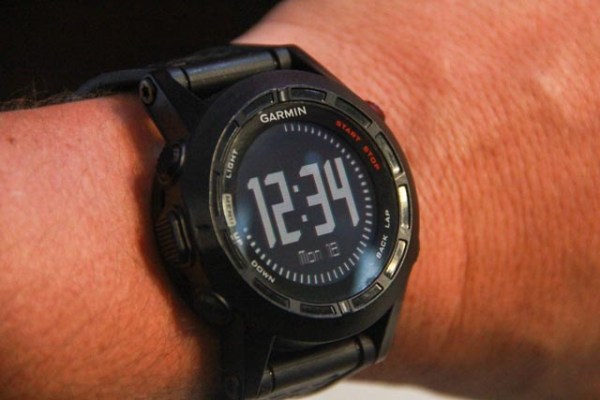You’re in a desert, walking along in the sand, when all of a sudden you look down and see a tortoise. It’s crawling toward you… how do you train yourself to outrun it? I like to think you’d probably want a $400 Fenix 2 from Garmin.
I’ve used Garmin running watches since their first, bulbous balls of GPS electronics were launched in the early 2000s. Now, after multiple generations and iterations, after the slimming down of most of the battery and a general improvement in GPS connectivity (plus a generous dollop of improved styling) we have reached the apex of the activity watch summit. The Fenix 2 is one of the coolest-looking sports watches you can get and, for once, it’s surprisingly accurate and very, very usable. And it looks like something Pris would wear.
What does it do? Pretty much what you expect from a trail watch and a running watch combined. It features a compass, barometer, and altimeter, easily accessible from the main time screen, as well as heart rate, pace, and distance when it’s in exercise mode. In fact it supports a number of sports including, Garmin notes, “running, climbing, riding, hiking, paddling, skiing or swimming.” I’ve used it primarily for running although it was nice to have the outdoor features on bike rides.
First, let’s talk about battery life. This thing lasted about a week of regular use. I run three times a week for about an hour and, when in exercise mode, there is definitely a visible decline in battery life. As for the sensitivity of the altimeter and compass I saw no major issues and GPS lock-in times were either instantaneous in areas where it had locked in before or, unfortunately, interminable in places where there was little sky visibility or in new areas.
If you’ve read my previous running watch posts, you’ll learn that I never have good luck with GPS lock-in here in deepest Brooklyn. The Garmin Forerunner 15, an entry-level watch, had a terrible time locking in while other watches like the Nike+ Sports Watch and Polar devices suffered from the same problem. In a new location, the Fenix 2 takes about eight minutes to lock in and, once it has connected once it takes just a few seconds to lock in again. That is far superior to any of the other watches I’ve tested.
[gallery ids="1045391,1045390,1045389,1045388,1045387,1045386,1045385,1045384"]
Other cool features – sadly ones I couldn’t try out – are the swim and ski modes. From Garmin’s website:
In fact, the list of potential sports is so long on the watch it’s almost comical. I’m surprised Salsa Dancing and Bocce aren’t on the list. If you’re like me, a weekend warrior looking for an all-purpose outdoor and sports watch, this is one of the better ones I’ve seen.
It’s also worth noting that this watch is compatible with Garmin Connect, Garmin’s online service that shows you nearly everything you need to know about your runs. I especially like the route setup, a feature that allows you to drop breadcrumbs and set waypoints as you run. This means you can set a beginning and end point and then allow the watch to navigate you towards that point as you run or walk. It syncs with a PC or Mac using a specialized cable – that’s one thing Garmin hasn’t fixed yet – and can connect to Garmin’s own heart rate monitors and other ANT+ and Bluetooth-compatible accessories.
In all, I’m very pleased with the Fenix 2. It’s one of the few sports watches I would actually wear on a daily basis and, barring the need to recharge it every week or so, it could pass for a standard digital trekking watch. It’s dense and dark and cool-looking and it does just about everything a Citizen or Seiko hiking watch can do but with a styling and UI that is instantly agreeable. The GPS and heart rate features, then, are icing on the dystopian cake.
Sadly, though, I’m not certain the Fenix will be able to tell Replicant from human, a major feature that Garmin should add in upcoming versions.
[gallery ids="1045375,1045373,1045372,1045370,1045368"]
